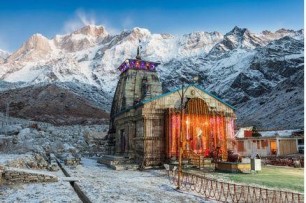General Insurance Blogs, Articles & Updates by - Magma HDI
Have us call you
- RENEW YOUR POLICY
- BUY NEW POLICY

Ten best tips to reduce high cholesterol levels
Increased cholesterol levels are a cause of concern as it brings multiple health issues, including the risk of a stroke and other heart diseases. Irrespective of age, maintaining cholesterol levels is the first step towards living a healthy lifestyle.
Supposing you are looking for ways to lower your cholesterol without medication, read this post to learn how to keep those numbers down naturally.
1. Add monounsaturated fats to your diet:
Monounsaturated fats can be found in food substances like olive oil, canola oil, tree nuts such as almonds, pecans, and cashews. These fats do a great job decreasing LDL (bad cholesterol) and increasing HDL (good cholesterol). They even work to stop the oxidation of the cholesterol that contributes to clogging the arteries.
2. Add polyunsaturated fatty acids:
Consider including polyunsaturated fatty acids as they have shown tremendous results in decreasing LDL cholesterol and reducing the risk of heart disease and type 2 diabetes. These are principally your omega-3 fatty acids. You see these in oily fish like salmon, mackerel, and shellfish like shrimps. You may also find them in tree nuts and flax seeds.
3. Avoid trans fats:
This is the next thing you should eliminate from your diet. You will find these in pastries, butter spreads, cookies, etc. The major con with trans fats is increasing your total cholesterol, including your LDL, and decreasing your HDL by 20%.
4. Add more soluble fibre:
Soluble fibre is derived from plants, and it works on the bacteria present in your guts. The digestion of the fibre by the bacteria helps lower your cholesterol. Beans, lentils, fruits, and whole-grain oats are a few fibre rich foods.
5. Workout:
Working out not only decreases your harmful LDL but also increases your good HDL. More extensive studies have shown that 30-45 minutes of activity five days a week can enhance your cholesterol and decrease the risk of heart disease.
6. Stop smoking:
In smokers, the immune cells cannot return cholesterol from the vessel walls to the blood where it should be and contribute to plaque formation that leads to clogged arteries. So, do your body a favour and quit smoking.
7. Focus on shedding some weight:
Plenty of studies have shown that you can positively impact your cholesterol by losing weight. Pick a good eating plan, stick to it, and be healthier to shed some pounds.
8. Add more vegetables and lean meat to your diet:
The closer you get to your vegetables, the easier it becomes to reduce cholesterol levels. Non-vegetarians can choose leaner meats like fish and skinless chicken to cut off the extra fats.
9. Plants, sterols, and stanols:
These are plant-based versions of cholesterols, but they do not elevate your body’s cholesterol level. Instead, these versions compete with its destructive forms, avert absorption, and reduce LDL.
10. Supplements:
The last thing you can do is look at different supplements required to control cholesterol. There are several supplements out there, but most work on improving the amount of Omega-3 fatty acids in our diet. Things like fish oil and flaxseed oil help improve your HDL.
Cholesterol diseases are linked directly to the heart, and the treatment for most of them is taxing for your pockets. Aged parents and people with irregular eating and sleeping habits commonly face this issue. Follow these healthy tips and check out some of the best health insurance in India for parents to add an extra layer of protection.
Click HERE to get the best health insurance in India for parents.
Disclaimer: The information provided above is for illustrative purposes only. To get more details, please refer to policy wordings and prospectus before purchasing a policy.

Caught in traffic? Here are five innovative ways to keep your mood high
Getting stuck in traffic has become a usual thing in rush hours, and it is the most unpleasant scenario of every city these days. These long queues of snail pacing moving vehicles can be frustrating and sickening. However, the time taken in your commute does not have to go to waste. You can do some productive things than just hanging in your car or cursing drivers who try to cut the queue.
If you desire to overcome the problem by finding solutions, it won’t be a problem anymore. There are numerous methods to help you with your morning and evening commutes and increase productivity. Here’s how you can make the most of your time while stuck in traffic.
1. Listen to your favorite music or podcast:
There is nothing better than a good dose of lively music to get your day started. Your commute time does not always have to be productive; you can take this time to simply enjoy the things you like, such as listening to music, your wishlist audiobooks, or podcasts of your favourite speakers.
2. Get in touch with friends:
Again, caught in epic congestion! While you are on the way to your destination, take advantage of the extra time to respond to calls, and catch up with your friends. It lightens up your mood for the day. But be cautious; talking to friends is a good idea only if traffic is not moving. Otherwise, keep your mind on driving and avoid any distractions.
3. Make notes of your thoughts:
You can utilize your drive time to develop ideas or plan out a company strategy. And to get hold of these ideas, make sure you note them down somewhere. Writing down things while driving is not what we would suggest; instead, make use of voice assistant from your mobile phone.
4. Perform a daily review:
It’s the ideal moment to make sure the most critical tasks on your to-do list are towards the top. Put the phone down, gaze out the window, and simply let your mind roam to prioritize your work. Take advantage of your free time and pay attention to your urgent tasks and the best solutions for them. You never know; you might come up with an excellent solution to a minor but irritating issue at work.
5. Take a moment to study yourself:
Everyone must take the time to align and analyze their situation. The time you get while being caught in traffic can be an excellent opportunity to reflect critically on your well-being.
Acknowledge any tension in your life and identify possible changes that could be taken to improve your mental and physical well-being.
Getting caught up in traffic is always a moment of annoyance, whether for a few minutes or hours. We end up criticizing everybody around us, like fellow drivers, pedestrians, animals, vehicles, and even ourselves. The frustration caused during this period can have an extremely detrimental effect on your mood. Hence, to avoid letting our mind wander in angry thoughts, one should take up the above activities and indulge in them.
Everybody tries to make their way out of the traffic, which sometimes results in crashes. It may or may not be your fault; either way, you are to face the damages caused. In such situations, having car insurance proves to be helpful.
To get the best car insurance deals, click HERE.
Disclaimer: The information provided above is for illustrative purposes only. To get more details, please refer to policy wordings and prospectus before purchasing a policy.

Best Tips: Choosing the right colour for your car
Getting your new car is one of the significant milestones you may think of. When choosing the best model for you, various factors such as price, functionality, car insurance, etc. are considered.
However, another crucial factor is the colour of your car. The colour reflects your personality. Before you go ahead and make your big purchase, here are few tips to consider when picking the right colour for your car.
1. The resale value of your car: You will be surprised to know, but the colour of your vehicle affects the resale value. White and silver usually get a higher resale value than other colours.
2. Model: Another parameter is checking the variant. Not every colour you pick will suit the model of your car.
3. Red is not expensive: One of the common myths is red has a higher car insurance premium. This is entirely not true.
Always consider your car's purpose before finalizing the colour. Every colour might not fit your personality. For example, a politician or bureaucrat having a bright colour car seems bizarre to many eyes. Now let us look at the trendy colours, including those that’d look best on you and are perfect for your requirements.
1. Metallic: Metallic colour cars tend to be beneficial in the long run and make your car valuable. The colour is mainly known for its dependability and value to help get higher resale value and save you substantially.
2. Blue: Usually, blue refers to the "common man's car," but the new metallic options available in the market look excellent for working professionals. It is recently the number one choice for female drivers who need a cool look. As they say, "Blue is cool".
3. Throw off your attitude with the perfect black finish: Black is one of the most popular colours for any car. Known for its elegance and rich look, the black colour gives the vehicle a perfect attitude when you are on the road.
4. Get Sporty with orange and other bright colours: Bright colours, including yellow, green, or orange, always look super cool on your sports car. However, choosing it for your commercial vehicle can always not be a good idea.
5. Chic and Sleek with white: White is yet another safest colour for cars. It is a neutral colour and suits the best on commercial vehicles. Also added to a sport or luxurious vehicle with the perfect tinted glasses and chrome finishing, white makes your car classy!
6. Romantic with Red: Red is a popular and influential choice with a bit of romantic touch. However, keep in mind that red does not fit every model.
There is no such colour as "perfect". Instead, based on your personality and preference, you can pick one that looks the best for your car. When choosing the perfect colour, remember that scratches and dirt appear higher on specific colours and may end up ruining the overall look of your car. Also, reconsider the darker colours for your vehicle if you live in a hot weather city, as it results in heating up your car quickly.
To know more about the car insurance deals available, click HERE.
Disclaimer: The information provided above is for illustrative purposes only. To get more details, please refer to policy wordings and prospectus before purchasing a policy.

Are you a lone wolf? Use these ideas to manage your luggage on your bike
Do you like motorbike road trips but always struggle with what to pack and how to pack? Then, you've come to the right place. Allow us to provide you with some of the most practical suggestions for reducing clutter and enjoying your trip rather than constantly worrying about your bags.
Compulsive overpacking might be an issue when travelling alone and having little luggage space on a motorcycle. Unfortunately, when it comes to preparing for a motorbike journey, many riders make several basic mistakes. They tend to overload their bikes with luggage that later affects them in their journey. We've compiled a list of a few practical tips to manage your luggage correctly.
1. Motorcycle travel packs are a good investment:
Bundling your luggage and tying it down with bungee cords may be cost-effective, but it leaves your luggage fully exposed to external conditions. If the weather suddenly turns bad, everything will become moist and wet. You can mount the motorcycle luggage boxes on the side of the motorcycle, but what about transporting heavy items? Heavy items are challenging to handle alone; in this case, you may consider purchasing a motorcycle top box. These are ideal for transporting bulky items like motorbike riding boots and photographic gear.
2. Make a list of your requirements:
The most crucial step in decreasing suitcase clutter is to prioritize your travel needs and prepare accordingly. Recognize that a road trip aims to discover and enjoy the destination rather than be oblivious to day-to-day conveniences.
3. Don't pack everything:
Don't bring everything you need because most of the items you'd need are already available at the local places. Rather than stuffing your baggage with unwanted items, buy some on the way. Disposable batteries, paper napkins, and paper plates for eating are just a few examples that come to mind. Unless you are picky about your food, make purchases to eat and drink on the road to save room.
4. Carry multipurpose stuff:
Rather than bringing specialist stuff, seek objects that may be used in various settings when packing your baggage. Carrying multipurpose products without taking up a lot of room is an excellent strategy to eliminate clutter. For example, you can keep a phone case with a pocket, which you can use to keep some essential documents or cash.
5. Organize at every step of the route:
Most people arrange their belongings at the onset of their journey, but things start to go crazy as the trip goes! Keep things organized at all times. Instead of dumping everything in the bag, properly roll and tuck it. Keep dirty clothes apart from clean clothes and separate large items from small items, especially those susceptible to damage due to excessive dampness or heat.
These tips are proven of great help when it comes to packing for your solo trip. However, packing and riding lessons are not enough to keep you secure. Hence, we also recommend having updated bike insurance for your bike while it is on the road. Compare with hundreds of bike insurance online and get the best suited as per your requirements. Safety while travelling is something you shouldn't skip.
Looking for bike insurance online, click HERE.
Disclaimer: The information provided above is for illustrative purposes only. To get more details, please refer to policy wordings and prospectus before purchasing a policy.

Stinky car interiors? Here's how to get rid of the foul odour
Everyone wants the shiny look of their cars. But what about the smelly interiors? Stinky car interiors can negatively affect your mood and make you feel awful. So, to get rid of foul odours, in this post, we have mentioned some quick tips to help you have a refreshed car and a happy mood while commuting.
1. Vacuum the fabrics:
Most of the time, solid particles tend to get trapped in the car's interior and removing them can be a daunting task. These particles get deep into the fabric. Even after cleaning your car, you still wonder where the smell is coming from.
To get rid of the foul smell, use a vacuum cleaner to clean all the seats and the fabric of your car. This will suck all the gunk and dust particles from your vehicle, leaving your car clean and fresh.
2. Avoid smoking in the car:
If you smoke in your car, you might know how unpleasant the smell is. Smoking leaves behind tar which can stick to the interiors. The smoke can even get in the vent ducts of your air conditioner and become nearly impossible to remove.
To get rid of this, you can wipe off your car with a solution of water and vinegar in a 1:1 ratio with a few drops of liquid detergent added to it. This will remove all of the gunky substance and leave the surface of your car clean. In addition, you can spray some air freshener in the air ducts of your air conditioner to combat the odour.
3. Use baking soda for unpleasant food spills:
Sometimes, you tend to drop something on the carpet or your car's fabric, and the spills being left for a long time start to stink. Even after wiping it, the pungent smell may remain.
To remove the smell of the leftover spill, you should mix a tablespoon of baking soda and three tablespoons of vinegar and use this mixture to rub the mat or car fabric. This mixture will clean your fabric and remove all the unpleasant smells coming from it.
4. Use car deodorants and air cleaners:
This is one of the simplest and quickest ways to keep your car smelling fresh. All you need to do is pick your favourite car perfume and spray it in your vehicle. The air spray molecules will trap the pungent smell and give your car a fresh aroma. There are other similar products that you can explore, like odour patches, air- filters, etc.
5. Get your car a spa:
This will be your last resort if any of the ways mentioned above are not working for you or if the smell is very foul. Next, you should take your vehicle to a professional car cleaning service. The cleaners will clean your car from inside to the outside by washing your seats, mats, air ducts, food trays, etc., making your vehicle look and feel brand new.
We all know how bothersome stinky cars can be. You can follow the tips mentioned above to get rid of the bad odour in your vehicle. But it is not always the dirt that causes the smell. Sometimes these smells can be from leakages. If not addressed correctly, these issues can cause severe damage. So, we would suggest you have car insurance by your side to cover all repairing costs at the garage. Reliable car insurance will keep the stress off your pockets and give your possession the benefits to have a long life.
Click HERE to buy the best car insurance plan.
Disclaimer: The information provided above is for illustrative purposes only. To get more details, please refer to policy wordings and prospectus before purchasing a policy.

Action camera for your bike travel: Nine tips to film the best videos
Action cameras have become a new trend among bikers. You must have seen the riders with one fastened to their helmets or handlebars. One reason being, India is adapting well to the vlogging, thanks to all the biker communities and influencers. With the evolution of action cameras, millennials are interested in capturing their bike rides and sharing the content on social networking websites.
There are some easy steps for you to produce the best-looking shots from an action camera, regardless of riding ability. Read these nine best tips to film better videos through your action camera.
• Choose a suitable device; you may not require an expensive camera and instead need something easier to transport and manage and friendly with all weather conditions.
• Plan out your videos; consider the video's objective, surroundings, the route you'll take, and how you'll film it. Take into account the lighting, the weather, and even the background music.
• The mainstream camera technology can record at 24 FPS (frames per second) for regular speed and at least 60 FPS for slow motion. However, extra-slow motion does not kick in until at least 120 frames per second, and filming at greater frames per second may lower the resolution.
• Set the white balance to auto, although you may set it to specific numbers corresponding to different lighting circumstances (for example, 5500K = daytime). We find that letting the camera make such adjustments for you is always the best option for shooting true colours on a motorcycle.
• With the voice command feature, you can start recording at any time throughout the ride and stop whenever you choose. Even better, you can snap 'Still Photos' while moving.
• 4K recording requires more memory, drains the battery faster, and can be difficult to edit or playback on a computer.
• An SD card in your action camera is always not sufficient. You should keep at least two or more if you're going on a long journey or simply want to capture more films.
• The typical rule of shutter speed is that it should be twice as fast as the frame rate. A shutter speed of 1/60-1/96, on the other hand, is more helpful because it avoids the sickening amount of 'Motion Blur' that might occur when riding a bike.
• To avoid water drops damaging your footage, use a water-repellent glass treatment spray like Rain-X.
Motorcycling has forever changed as a result of action cams. With the rising trend of sharing content on social media platforms, people use action cameras for incredible filming. However, driving bikes on roads brings the great responsibility of getting the proper protection for you and your bike. You can replace your cameras but not your life, so invest in good 2 wheeler insurance.
These tips for getting better footage are only a starting point; if you have something else that works for you, go for it. Beyond any camera setting, position, or attachment, the most important thing to remember is that the one who presses the record button is the real star.
To get the best 2 wheeler insurance, click HERE.
Disclaimer: The information provided above is for illustrative purposes only. To get more details, please refer to policy wordings and prospectus before purchasing a policy.

The complete guide to start learning carpentry
Often people think they need to invest years in mastering the art of carpentry. However, that's not entirely true. With the right mindset and tips, you will learn carpentry in no time! This specialized craft, believed to be one of the world's oldest professions, is commonly employed even today.
Here we have composed a detailed guide for you that will help you in your lessons while you are learning carpentry.
1. Learn about different types of carpentry:
When it comes to carpentry, the only thing that comes to an individual's mind is furniture. But that's not the real deal. There are different types of carpentry, and you can study each one and then pick the one suited for you.
• Formwork: Formwork in carpentry is designed to construct the structure of the object. It comprises the mould in which the concrete is poured while making stairs, walls, pillars, etc. Formwork, made with wood and steel, can be temporary or permanent.
• Framers: Framers work upon repairing and restructuring wood or wood-derived products. The task that you are to do as a framer is to measure, cut, and assemble the wood for industrial or household purposes.
• Cabinet designers:
This form of carpentry requires proficiency with woods and mastery of tools. The job of a cabinet maker is to build, repair and modify wooden structures and furniture.
• Joiners: Joiners, also popularly known as 'finish carpenters,' are more inclined towards wooden ornaments, fine woodworks, and fitting of doors and windows.
2. Take safety precautions:
While working with tools and woodwork, you must learn safety measures like first aid training and have all the safety accessories like gloves, glasses, helmets etc.
3. Measure like a pro:
Measurement is one of the essential skills you need to learn while practising carpentry. You will be cutting several wooden blocks and pieces most of the time. Therefore, double-check your measurement before doing anything.
4. Learn to use carpentry tools:
Tools make a carpenter's work easier, but only if they know how to use them. Carpenters use various tools like handsaws, chisels, mallets, etc. Therefore, it would be best to learn to use them rightly and understand which woodworking activity necessitates what type of equipment.
5. Get trained:
There are plenty of paths to carpentry, and some of these do not even require any qualifications, only skills.
6. Get working experience:
Working on-site on a live project can be one of the best ways to get into the carpentry industry. You can gain plenty of knowledge and skills while you are at work. Apart from that, you can even get into different roles like general construction operations and work with professional carpenters.
7. Take up courses:
There is an abundance of specialized courses you can sign up for learning carpentry. These courses typically provide you with hands-on and theoretical training to make you a better carpenter.
Carpentry is an excellent skill to learn and practice, and you can excel at it if you choose to continue with passion. Although being a skill, it still poses a threat while working. You may get hurt while using a tool or working with heavy objects. So, it is suggested to have the best personal accident policy in India to safeguard your wellbeing and put less stress on your pockets.
Click HERE to find the best personal accident policy in India.
Disclaimer: The information provided above is for illustrative purposes only. To get more details, please refer to policy wordings and prospectus before purchasing a policy.

Ten best holy places to visit with your family
Inhabited by some of the most highly religious communities and cultures, India is the world's largest multi-ethnic and religiously diverse republic. The air in the land carries the essence of Dharma and Karma to welcome your spiritually thirsty souls.
Here, we've compiled a list of India's most exquisite holy sites to visit with your family or by yourself to find serenity, knowledge, and peace.
1. Shirdi:
Practitioners of several religions visit the Shirdi Temple in Maharashtra - home of the famous guru Shri Sai Baba. The devotees believe that Sai Baba's 'Dwarkamai' is the place that will solve all their problems.
2. Golden temple:
One of the most significant pilgrimage sites for Sikhs is the Harmandir Sahib Gurudwara in Amritsar. One distinct feature of this Gurudwara is its Langar (meal service), which bagged the honour of being one of the most extensive operating kitchen services. The Langar is open all day for the devotees to enjoy delicious prasad and make their visit more memorable.
3. Kedarnath:
The Hindu temple of Kedarnath in Uttarakhand praises Lord Shiva. It is one of India's Char Dhams. According to the mythology of Skanda Purana, Kedarnath is considered the abode of Lord Shiva.
4. Amarnath:
The sacred Amarnath shrine is located in Jammu & Kashmir. Devotees can only access it after a few days of strenuous hiking. This temple does not contain an idol. Instead, a Shivling forms when water flowing from the cave's top solidifies and rises upwards. This natural phenomenon is the highlight of this holy place. Amarnath is also known as one of the 18 Mahashakti Peethas.
5. Vaishno Devi:
Located in Jammu and Kashmir's Trikuta mountains lies the temple of Vaishno Maa. It is a Shakti Peetha and one of India's most prominent religious sites. Moreover, it is associated with a thrilling story highlighting the victory of good over evil. After visiting the Vaishno Devi, visiting the Bhairavnath temple is a must.
6. Badrinath:
As famous as Kedarnath, Badrinath is one of the Char Dhams for Hindus in the state of Uttarakhand. Lord Vishnu was believed to have come here to meditate and call this location home.
7. Temple of Jagannath:
According to Hinduism, the Jagannath temple in Odisha's Puri is an important pilgrimage site as it conducts the annual Rath Yatra here. Many devotees of Vishnu and Krishna participate in the yatra and celebrate the event like a festival. In addition, this temple is famous worldwide for its architectural magnificence.
8. St. Francis church:
Situated in Goa, it is acknowledged as India's first minor basilica. It houses the bones of St. Francis Xavier in a coffin and is only opened to the public once every ten years. It is also renowned for its gothic architecture.
9. Dargah of Haji Ali:
Dargah of Haji Ali is one of India's most famous Islamic holy sites. Situated in southern Mumbai, it consists of a mosque and Pir Haji Ali Shah Bukhari's grave. The Mughal style architecture influences the dargah, with beautiful white domes and minarets.
10. Bodh Gaya:
Located in Bihar's Gaya district, Bodh Gaya is one of the significant pilgrimage locations for Buddhists. It features three monasteries and several organizations that offer classes on Buddhist philosophy and an 80-foot-tall Buddha statue. It is also home to the Mahabodhi tree, where Gautam Buddha attained enlightenment.
When planning your next vacation, consider a couple of these religious sites in your itinerary. Set off on a spiritual pilgrimage with your family and feel inspired. While you uplift spiritually, it is also vital to ensure your family's safety while travelling. Before making travel plans to these holy places, count on Magma HDI's general insurance policies and have a safety net for you and your loved ones.
Click HERE Browse general insurance policies
Disclaimer: The information provided above is for illustrative purposes only. To get more details, please refer to policy wordings and prospectus before purchasing a policy.

Planning a reunion? Consider these five tourists spots you should go to
It's been a long and challenging time of social isolation, lockdowns, quarantines, and cancelled gatherings. But, finally, the series of missed opportunities have ended as more vaccines reach the arms, and the limitations imposed by the Covid-19 national lockdowns have progressively eased. Now, we have been allowed to socialise with our loved ones in ways we haven't been able to for a long time.
So, what better time to plan a reunion than now? It's time to take your travel bags out of your closet and put an end to these slumber times.
Below, we've talked about five great reunion spots for you and your loved ones to call home for a few days.
1. Goa, where vibes match your energy: If the most desired vacation in India had a name, it would most likely be Goa. Goa is as near a fantasy paradise as you can get and is a perfect blend of modern and traditional culture. You think of clean water beaches, enthralling water-sports activities, and crazy pubs and disco parties whenever you hear about Goa. But, wait, Goa is much more than that. The best Goan seafood, a historical Portuguese colony with a distinct charm and the Goan culture has no parallel. Since the proclamation of a nationwide lockdown in March, Goa has been one of the most eagerly awaited tourist destinations. It's the right time to plan a trip and make a vibe – Goa is ON!
2. Darjeeling, a paradise for tea lovers: Located in the Kanchenjunga range of the mighty Himalayas, Darjeeling is a picturesque hill station in the Northern region of West Bengal, which has earned itself the moniker of 'Queen of Hills.'
Rightly so, Darjeeling works wonders to cater to the magnificent Himalayan scenery, offering a blend of splendid tea plantations on steep mountain slopes, toy train trips through the beautiful city, and exquisite traditional Tibetan food. So if you want to cool off and spend time in the arms of mother nature, Darjeeling is the place to be.
3. Rishikesh, discover adventure with spirituality: Commonly known as the 'Yoga Capital of the World’, Rishikesh is part of India's beautiful state of Uttarakhand. Rishikesh is a place that truly epitomises the word serenity since there are several ghats and ashrams for you to rediscover yourself amid the world's craziness.
Go river rafting in the river Ganga or thrilling treks in the Himalayas; there's something for everyone. Rishikesh is catching the attention of travellers massively after the ease of lockdown restrictions. It will help you wake your spiritual side and enlighten your mood in peaceful surroundings.
4. Coorg, mountains calling: Coorg is part of the scenic state of Karnataka. Located halfway between Mysore and Mangalore, it appears to be a sliver of heaven that has strayed from God's realm. Coorg is a land of rolling hills, evergreen jungles, spices, and coffee farms. Fall in love with soothing sunrises, pristine air and heart-throbbing views of mighty elephants while sipping on a cup of famous Coorg coffee.
5. Munnar, surrender to serenity: Part of God's Own Country, Munnar is one of India's most famous hill stations. It is a destination with an abundance of natural beauty to see, experience, and enjoy. It is a land of virgin woods, beautiful hills, Savannahs, gorgeous valleys, countless streams, magnificent waterfalls, extensive tea plantations, and winding walks that are sufficient to calm your exhausted minds. Reside in the abode of greenery with your loved ones by visiting Munnar.
Have you decided on a destination for your reunions yet? If not, plan it soon, but remember that the pandemic has not ended yet, so you must abide by all Covid protocols. Also, don't skip the most crucial part of your trip: being safe and keeping others around you safe. Have reliable car insurance, and if you have one, check for your car insurance renewal before you pack your bags and set out for an adventure.
Click HERE to know about the best car insurance renewal deals that you can get.
Disclaimer: The information provided above is for illustrative purposes only. To get more details, please refer to policy wordings and prospectus before purchasing a policy.

Eight best tips to be a good pet parent
Having a fluffy and tiny pet with you is similar to raising a small kid. But, as their parents, you also have a responsibility to make sure they do not face any problems. Additionally, having a pet in your home brings a lot of challenges. You have to ensure that you take adequate care of your pet to get them a cosy and safe habitat.
We help you with some tips to become a good pet parent and shower your pet with some extra love and care.
1. Make your pet get a safe environment:
Since your pet will spend most of the time inside the house, ensure that you create a healthy environment. Perform all the primary duties such as ensuring that their water bowl is complete, having food whenever they are hungry, litter box, and bed to snuggle when they want to relax. Keep chemicals out of reach and make sure they are also away from areas that can put them at risk, such as electric wires, electric cords, and strings.
2. Take your pet to the vet regularly:
Like humans, pets also fall sick, and it often goes unrecognized. To ensure your pet is away from sickness, take them to the vet for a regular visit.
3. Keep them active and provide enough socialization:
Similar to how kids need to play outside, pets are equally active and playful. Take your pet to outings, for a walk, run, or take them out for fun activities. You could also take them to pet events where they have plenty of socialization with other pets.
4. Set a daily routine for your pets:
You can create timelines for bathroom breaks, mealtimes, playtime, and outings. This way, your pet sticks to a daily routine, making everything easier.
5. Groom them regularly:
Hygiene is crucial, whether it’s for humans or pets. To avoid infection and diseases, keeping your pets groomed is essential. Regular baths and cleaning will help in keeping them fresh. Additionally, trim their nails so you or other family members do not get injured while playing with them.
6. Invest in training your pet:
Training your pet is an essential aspect of being a good parent. While many pets change and adjust to new behaviours as they grow, training is necessary. You can start by training them from the initial stage, developing them into habits. However, you can also invest in professional pet trainers to save time.
7. Understand that your pet may suffer from separation anxiety:
Like humans, pets such as dogs and cats suffer from separation anxiety. Your pet will become anxious and follow aggressive behaviours as you leave home. An easy way to reduce separation anxiety is by leaving something with your scent on, such as a blanket or sheets, so they feel close to you even if you are not home.
8. Create a playful environment:
Your pets may become bored after a while. Although you cannot ensure that you will entertain them all the time, creating a playful environment by filling their area with toys and other products designed for pets will keep them joyful all the time.
Being a pet parent can be challenging and fun at the same time. Some people feel more connected to their pets than humans, and it’s no harm in that. However, as a pet parent, you must take proper measures to ensure your pet feels loved all the time.
Entrust your bond with your beloved pet with insurance benefits to avoid the worries of injuries and focus just on spending quality time with your animal buddies. Invest in a robust online general insurance plan and get the advantages of its features for your complete family.
Click HERE to know more about online general insurance plans.
Disclaimer: The information provided above is for illustrative purposes only. To get more details, please refer to policy wordings and prospectus before purchasing a policy.

How rock climbing can help you boost your leadership skills?
There was a time when only those with unbelievable daring and high tolerance levels could enjoy rock climbing. But today, time is changing; with modern gears and professional instructors, anyone with passion and some training can exercise the sport of climbing.
Mountain climbing is the sport of climbing rocky surfaces with the aid of ropes and equipment. The goal is to reach an endpoint or a summit of a structure.
It is a physically demanding sport that combines fitness and agility with mental strength. It forces you to push your body's ability further to conquer an ascend or traverse. It may be difficult for some, but that is just another positive aspect of the adventure. The activity gives you a mental and physical boost with an immense sense of accomplishment.
One of the significant benefits is boosting your leadership qualities. As rock climbing is a preferred group activity, it becomes the ultimate classroom with lessons applicable to all aspects of life, including business, management, and leadership.
So, here are some of the important lessons you learn during your way up that eventually make a big difference in your leadership skills.
Trust – important of all! Trust and confidence within the team of climbers is a quintessential skill required during mountain climbing. You may enter situations where your life depends upon your teammate's abilities, and for this, their capability and competence must convince you. Trust cannot be earned or given in a moment. It requires several sub qualities like confidence, proficiency, transparency, and patience. You need to be familiar with each other's strengths and weaknesses and to be confident about relying on someone in the future.
Everyone has their fortes in climbing. For example, some are proficient in rock climbing, whereas others secure the rope while your partner climbs, so we must trust each other to lead when necessary. These are qualities of a good leader that he acts as a team player and not a commander.
Decision making – a remarkable ability! The adventure compels you to make many pivotal and critical decisions during your climb. Your one wrong decision can lead to a consequential mission termination, delay conquering the rock or even a mishap. It requires clarity of mind to work through solving problems. Being able to prioritise and understand the bigger picture is critical to navigating through obstacles.
A great way of decision-making in such environmental conditions is the OODA loop used by the US military. OODA stands for observe, orient, decide and act. OODA is a four-step loop approach that focuses on decision making by filtering available information, putting it in context, and making the most appropriate decision while understanding that alterations should be made (if necessary) when more data is gathered. It is helpful in scenarios where the ability to react to changing circumstances is vital.
Another leadership quality is 'care and concern'. No doubt on the hike, you look out for each other, but that is not enough. Ensure that everyone has a personal accident insurance policy, as it is a necessity that many may overlook.
Is a good leader enough for a successful trek trip? Absolutely not! Every individual requires a skill set for this sport. Skills of navigation, communications, survival, and climbing are all necessary. In addition, rock climbing requires courage and determination. The hard work of ascending is worth the peace at the top.
Click HERE to know more about our personal accident insurance policy.
Disclaimer: The information provided above is for illustrative purposes only. To get more details, please refer to policy wordings and prospectus before purchasing a policy.

Here are the six best ways to combat work fatigue and get back your energy
We have all been in a situation where we've felt completely drained of energy but have no clue what to do to get it back. Work fatigue results in higher unproductivity and even leads to draining mental health. Therefore, to help you combat it, we have compiled a list of the best six ways you can regain your energy.
1. Stay hydrated:
When you don't drink enough water, your heart pumps at a lower rate than usual, resulting in a decrease in the supply of blood and oxygen to the organs. It is recommended to drink at least 3-4 litres of water per day. To get this amount of water, you can keep a bottle of water on your desk while working and take regular sips as you get your job done.
2. Have a clean diet:
It is necessary to ensure that your diet is balanced and contains the appropriate amount of nutrients required by your body. Your meals should include the right portion of protein, fibre, and, most importantly, green leafy vegetables. In addition, you must limit simple carbs and avoid sugar. Overeating can also be one reason why you feel lethargic all the time. Have a balanced diet that covers all your micro and macronutrients.
3. Use Pomodoro Technique:
Studies have proven that the human brain works more efficiently when given rest after any activity. If you work without taking breaks, you will feel low and unproductive. To avoid this, you must try the Pomodoro technique. Using this technique, you break your work into 25-minute chunks and take a 5-minute break every 25 minutes. This will help you manage your time efficiently and help you feel more productive and active.
4. Get yourself moving:
Studies have proven that individuals who work out daily have better cardiovascular activity and a better mood than those who do not. When you are physically active, your body releases endorphins in your bloodstream that give you a feeling of excitement and joy. Exercising for at least 20-25 minutes every day will help you be more active and physically fit.
5. Practice yoga and meditation:
To improve your focus and feel more energetic, you must try yoga and meditation. Many businesses and corporates have adopted meditation as a part of their culture. Practicing yoga and meditation every day may help improve your focus and achieve mental peace that will indirectly help you be more active throughout your day.
6. Consult your doctor:
This is your final resort if you have tried all of the aforementioned tips. There could be other causes why you feel tired and awful all the time. It is recommended to consult your doctor if you continue to feel fatigued even after a considerable amount of time. If you have health insurance, your insurance company can cover your medical expenses. Therefore, you will not have to worry about the cost of medical bills and pressure on your finances.
It can be extremely stressful to be unable to complete a given task even as the clock ticks closer to the deadline, especially when you are struggling with work fatigue. Fortunately, with the help of these tips, you will have a much easier time regaining your energy and feeling more productive!
Click HERE to understand the merits of health insurance.
Disclaimer: The information provided above is for illustrative purposes only. To get more details, please refer to policy wordings and prospectus before purchasing a policy.

How to raise low self-esteem and boost confidence for an improved living
Suffering from low self-esteem is something that most people deal with in silence. Some only have to encounter it for a short time, when they are sad about something or feel a bit low. But, if you continue to dislike yourself, your appearance, or your performance, it can lead to severe mental health issues.
Low self-esteem is often a product of unpleasant life experiences. A psychologist may help you figure out the root cause of your problem. The good news is you can improve your self-esteem at any age by making a few lifestyle changes.
Here we bring some advice for raising self-esteem and boosting confidence for an improved living.
1. Pay attention to your thoughts:
Keep a caution about what you are thinking. For example, avoid thinking negatively, such as if your friends do not hang out with you. Instead, note down the thought and start thinking about positive evidence that contradicts these statements. Finding even one piece of evidence will instantly make you feel better.
2. Identify your triggers:
We all have specific situations that lower our self-esteem. Note down all the things that make you feel insecure. Hanging out with negative people can often bring down your self-confidence because of their behaviour towards you. Avoid the company of such people as they always nudge you in an unpleasant situation.
3. Be kind to yourself:
We often care about what others think of us but rarely consider our thoughts. For example, you have put on an outfit you love, but you have started questioning yourself because someone else has told you that it does not look good on you. Do not do that. The voice in your head saying, “You look good today!” is way more important than other opinions.
4. Build a positive friend circle:
You might find yourself smiling more with specific friends and being a little less self-conscious with them. While not everyone has to make you feel good about yourself all the time, no one should be allowed to make you feel bad either. Enrich your circle of positive friends.
5. Do not fight your thoughts:
Believe it or not, every person in the world thinks that there is someone better than them, even your favourite movie stars, sportsperson, or other celebrities. You cannot control the thoughts that occur naturally to you. Instead of fighting them, allow yourself to feel them and try to lessen their influence on your behaviour and personality.
6. Nobody is perfect:
The ultimate mantra to a good and happy life is remembering that nobody in the world is perfect. Even the people who judge you are self-conscious about themselves, but they try to hide it by reflecting their insecurity on you. Therefore, do not compare yourself to them or pay heed to their opinion. Instead, focus on your goals and aim to be the best version of yourself.
Self-doubting can not only ruin your mental health but also invite unnecessary health problems that can cost you a fortune. These situations will only add to your worries and make you feel emotionally drained out. Hence, doing what makes you genuinely happy is essential for a healthier lifestyle. Having insurance for your aid is also a crucial parameter for improved living. Invest in Magma HDI’s affordable health insurance plans to boost your confidence, add value to your life and make you happy from within.
Click HERE to know more about affordable health insurance plans ideal for all your needs.
Disclaimer: The information provided above is for illustrative purposes only. To get more details, please refer to policy wordings and prospectus before purchasing a policy.

Make your next bike trip more eco-friendly with these travel accessories
After working hard throughout the week and surviving hectic schedules, a break is exactly what you need. A bike trip is the perfect way to unwind from the bustling noises of the city.
Travelling to places with greenery and mountains sounds like a fantastic way to spend your weekend. However, we must keep the beauty of these places alive. You can support the environment and contribute to sustainable travel by including eco-friendly travel products in your journey.
Check out some of these environment-friendly products that are worth the investment.
1. Reusable water bottles:
Single-use plastic bottles are one of the most significant contributors to environmental degradation. Most of these plastics go to the oceans and harms aquatic life. You can reduce plastic consumption by carrying your reusable bottle instead of buying a new one at every stop.
2. Cloth bags:
Plastic has made its way into our daily lives and refuses to exit. From packing to discarding, we use plastic for everything. For an eco-friendly choice, consider canvas or cloth bags. If you wish to shop on the go, you can bring your cotton bag rather than using plastic ones.
3. Biodegradable toothbrushes:
You may think toothbrushes do not need to be made eco-friendly, but the handle and bristles are made of plastic. Nowadays, many brands have started producing toothbrushes made of natural materials.
4. Refillable coffee mug:
If you can carry a travel bottle, why not a mug for your coffee? There are many varieties and designs of reusable coffee mugs available in the market. So instead of buying coffee and leaving a trail of cups behind, you can simply refill your reusable cup.
5. Solar charger:
You may not always find a charging slot when you are on a bike trip. Solar chargers make sure your devices stay charged on the go, not only for collecting as many memories of your trip as possible but also for staying in touch with your family and friends back home. Solar chargers help you stay functional while simultaneously helping the environment.
6. Eco-friendly food containers:
Everybody gets hungry on the road. When packing your food, make sure to avoid plastic or styrofoam containers. It's also advisable to avoid using plastic ziplock bags. Instead, carry eco-friendly containers for your food.
7. Travel towel:
Always carry your own towels when travelling. You can use a microfiber towel that dries fast. This will reduce the need for new towels at hotels, thus reducing laundry and saving water.
Travelling to new places on your bike is a mesmerizing feeling. However, what’s even more amazing is preserving our environment to sustain the beauty of these destinations. By doing this, you'd be playing a crucial role as an environment safety volunteer by promoting a cleaner nature for future generations.
Also, you can only enjoy a trip to the fullest when you know you are protected under the hood of insurance coverage. Therefore, investing in 2 wheeler insurance is also an invaluable practice to follow to eliminate the stress of losing your bike and help you enjoy your trip more.
Browse through the best available 2 wheeler insurance plans for your bike HERE .
Disclaimer: The information provided above is for illustrative purposes only. To get more details, please refer to policy wordings and prospectus before purchasing a policy.

Eight things to know about when travelling with a big group
Visiting new places and destinations is one of the most fulfilling life pleasures you can have. It brings a wave of fresh thoughts and experiences that you’d never receive at home. While some individuals prefer to travel alone, there are several advantages to travelling with companions.
But the downside of a large group journey is that it can often be a trip of regrets if you don't plan it correctly. In this post, we’ve talked about eight great tips for you to follow if you seek an excellent group travel experience.
1. Assign a trip leader:
Having a leader makes so many things so much easier. From planning the itinerary to the hotel bookings, having a single voice for the whole group avoids miscommunications and helps the planning process a lot easier.
2. Distribute the work:
One person can be in charge of logistics, while the other can coordinate for itinerary and other activities among group members. Make the final decision unanimously. This way, everything will be structured, and no one person will bear all the load. After all, it’s a group thing, right!
3. Figure out your finances:
We aren’t talking about tracking expenses; we’ll get to that later. Firstly, figure out the group’s budget for stays, transportation, and meals. By doing this, you can explore many options and packages within your budget.
4. Look for group discounts:
You can unlock a plethora of deals if you're travelling in groups. It’s a winning situation for both the service provider and you. Looking for a stay? Call up the hotel or homestay and ask for group discounts. Booking air tickets? Book for the whole group at once and avail cashback and discounts.
5. Split the expenses the correct way:
The inability to share expenditures can transform an incredible vacation into a tax audit in no time. Nowadays, applications are available on smartphones that allow you to manage the splits and contributions smartly.
6. Schedule some YOU Time:
Remember, you're not obliged to do everything with the group just because you're travelling together. Get out and explore what matters to you the most. Encourage others to practice it as well; it will release you from the tension of being together always and make up for an exciting dinner talk when everyone gets back together.
7. Communicate:
Make sure that everyone in the pact is aware of the entire itinerary. Ascertain that everyone is aware of the stay's location and name. Set up a group text or some other method of assuring that the group can communicate with each other at all times.
8. Not everyone can be happy:
With numerous personalities, there will always be some people who aren't entirely agreeing with others, no matter how hard you try. It’s okay. This is part of group travel and going through it is also an experience of its kind. Find a way to tackle the inconvenience unanimously.
Additional Tips:
• Get in touch with a travel agent to make arrangements easier.
• Try including the people in your group who make life better and not challenging.
• Keep your general insurance plans (travel) updated. Encourage other group members to have a general insurance plan which provides financial protection during the trip.
• Opt-out of the group activities that you don't like.
• It’s a vacation, not a group project. Ease out and relax.
You'll be able to appreciate that quality time together even more now that you know how to arrange a trip for the pact. Those unbroken moments of connection are priceless in today's close yet so far digital environment. Go out and Live!
Know more about the general insurance plans before you plan your next trip. Click HERE .
Disclaimer: The information provided above is for illustrative purposes only. To get more details, please refer to policy wordings and prospectus before purchasing a policy.

Ways to educate your employees about cyber security
The recent surge in cyber-attacks on businesses indicates that no organization is exempted from the online threat. Even the IT industry, which is supposed to help other sectors be safe, is on the radar. No matter how top-notch your company's security software may be. The end-user of it is the employee, and their negligence could jeopardize the entire organization.
Recent studies have proven that more than 80% of cyber-attacks are caused by human errors and not the inefficiency of the security measure. As a result, the significance of cyber security training has grown exponentially. In this space, we will be discussing a few ways to educate your employees to be smart when it comes to online security.
1. Enlighten employees about the impact of cyber exploitation:
When educating employees, explaining the impact of a cyber-attack on the organization is the best move to start with. This includes shedding light on economic damage and loss of trust among consumers. Most workers are unaware of the risks of exposing the company's digital assets while being involved in activities like viewing work-related documents when connected to a public WiFi, discussing the security systems with people not associated with the organization, etc.
2. Make training mandatory for all the new employees:
Ensure that all critical aspects of cyber security are communicated to new employees to prevent potential cyber-attacks. Including data protection and internet usage guidelines in the employee handbook is advisable.
Demonstrating that your company values cybersecurity just as it does job functions and goals will establish a feeling of responsibility in them, and they will be cautious about the cyber threat from the beginning. Educating them over these matters is crucial.
3. Teaching them about password safety:
Passwords are required for accessing devices, authenticating accounts, and using any job software, platform, or tool. Because there is so much to memorize, many employees may choose general passwords that the hackers can readily decipher. Cybersecurity training should educate employees to grasp the significance of passwords. The company must promote encrypted passwords, and employees should be given proper training on the concepts of encryption and decryption.
4. Take advantage of cyber security training courses:
There are a lot of courses available online about cyber security. They take you through all the important Dos and Don'ts while using the internet. Encourage your employees to enrol in such programs and ask them to present the certificate of completion. You may even conduct in-house workshops and seminars regarding the same.
5. Update the training module and repeat the process:
Provide cyber security training regularly. Continuous training will enable you to include regulatory changes and knowledge about the most recent frauds into the training module. Staying up to date can make the difference between keeping your business safe and compromising it to fraudulent attacks.
Additional Tips:
• Organize seminars from cyber security professionals.
• Reward employees for their achievements and wise decisions regarding cyber security.
• Teach ethics to practice while working off-site.
• Teach the employees how to spot online scams.
• Secure your company against cyber-attacks by having public liability insurance as a protective cover for your data and information.
Employees having proper knowledge about cyber safety is a business's first line of defence because, as we said earlier, your company may have the most robust IT solutions. Still, your staff are the ones that operate and maintain those resources. Therefore, educating them with the proper understanding will improve what is frequently seen as the weak point in any security chain: people.
Click HERE to know more about how public liability insurance can protect your organization from cyber threats.
Disclaimer: The information provided above is for illustrative purposes only. To get more details, please refer to policy wordings and prospectus before purchasing a policy.

Understand these tips to drive safely in the ghat region
Although you might have overlooked common errors and mistakes while driving on the city roads, you cannot be as careless in the ghat region. You might think it's cool to speed up and make drifts on your car at the bends, but this can be extremely dangerous.
No matter how experienced you are, you have to be extra cautious about driving in the ghat section. The driving conditions in the ghats are challenging due to steep bends and the poor visibility ahead that aggravate the situation differently in different seasons.
Following are some safety tips that might help driving in the ghats feel easier.
1. Don't overtake unnecessarily:
It is typical for an average driver to overtake slow vehicles (especially trucks and buses). However, unlike familiar roads, the front view from a driver's perspective is often restricted in the ghats, and the driver cannot see if there is an available space for them to overtake. Hence, it is suggested to wait till the vehicle in front moves ahead or gives you a signal to overtake it.
2. Stop only at a safe spot:
You might want to click photographs of the pleasant views of the ghats. It is not a good idea to stop on narrow turns and block the way for other vehicles. Hence, if you plan to halt, ensure that you pull over at a safe spot only. Keep your parking lights on when you are stopping. This will alarm the vehicles behind you and reduce the risks of accidents.
3. Use hand brakes if necessary:
Hand brakes are efficient during ghat journeys, where multiple halts may occur due to elevated roads and bends in the way. They are the best support you can get from your vehicle to prevent accidents due to the inefficiency of the standard braking. You will have to set a balanced rhythm between the acceleration and braking of your car.
4. Gear shifting around bends:
It is better to shift down to the second or third gear so that you can take turns at the ghat section with ease. Usually, drivers do not realize that they are in the fourth or fifth gear until they reach the bends, which brings their cars to a jerky halt. Therefore, it is better to change gears and drive slowly in advance so that you do not find a problem in making the turns.
With these tips in hand, you need not worry about driving at the ghat sections now. Although it can be tricky for new drivers, following standard road protocols and safety measures can prevent unfortunate events and heavy losses.
Another important safety tip to follow is getting personal accident insurance for you and your family. Get appropriate personal accident insurance to add an extra layer of protection. Once you follow these tips, you are all set to drive in the hills in peace.
Click HERE to know more about the best deals on personal accident insurance.
Disclaimer: The information provided above is for illustrative purposes only. To get more details, please refer to policy wordings and prospectus before purchasing a policy.

Ten things to take care of before starting with your martial art lessons
We assume that you're about to have your first martial arts lesson soon if you are reading this post. From physical fitness to mental toughness, martial arts require a few prerequisites before you start kicking those sandbags. So, here we have compiled a list of things you must know before your first class.
1. Learn about the various forms of martial arts:
Some of the most common ones are Taijutsu, Kung Fu, Taekwondo, Karate and Brazilian Jutsu. Before starting your martial arts lesson, decide which form you want to learn and train in.
2. Get a standard set by your coach:
Once you decide on your martial arts form, consult your coach, and get a training routine in place. This will help in ensuring consistency and improvement.
3. Get the required equipment:
You need to gear up before beginning your martial arts lessons. Each combat art requires a particular set of equipment necessary to protect you and your opponent throughout.
4. Get your nutrition on point:
Martial art is not an easy sport. It demands a dedicated diet plan and an intense workout regime. While you are training, you will be burning a massive amount of calories. You will also be putting an excessive amount of strain on your muscles, which will result in them getting damaged. So, to repair and strengthen them, it is essential to have a balanced diet with the optimum amount of protein.
5. Understand the art rather than just learning it:
Martial art is not just a form of fighting. It is about understanding your body and its limits. Moreover, it is about achieving inner peace and gaining insight into your true potential.
6. Be ready to bear the blows:
While learning how to defend yourself, you must also be prepared for some blows. There will be instances where you will get bruises, body aches, or even severe injuries. It is recommended to get an individual health insurance plan to safeguard yourself against medical worries.
7. Be there with an open mind:
While learning martial arts, do not compare it to other art forms. Instead, respect each art and understand that each form has its significance.
8. Learn to have self-control:
With learning martial arts, you will learn a great deal about fighting skills, and you will gain a more profound knowledge of the human body. However, you cannot use these powers on an average person. You must be responsible because this can be fatal for the other person.
9. Be a part of the community:
One of the best things you can do is build your connections with the coach and your fellow mates. Your coach and co-trainees will understand you better than anyone else and will support and motivate you throughout your learning journey.
10. Start your martial art class with a NEVER GIVE UP ATTITUDE:
The process can be challenging, but the results will always be worth it. Always keep a high spirit and move ahead to achieve your desired results.
Martial arts is a fantastic sport to play. Not only will it keep you fit, but it will also be a means for your self- defence. Make sure that you are consistent with your training and focus on one particular martial arts form. However, injuries will be a part of the progress. Therefore, we recommend you schedule regular health check-ups and sign-up for individual health insurance plans if you're aiming to excel in fierce sport-like martial arts. And most importantly, remember, the process will always be challenging, but the results will be worth every sweat and tear you wash away!
Get the best deals on health insurance HERE .
Disclaimer: The information provided above is for illustrative purposes only. To get more details, please refer to policy wordings and prospectus before purchasing a policy.

Storing your motorcycle for a short term? Follow these tips to keep it safe
Are you going for a long holiday break? Or the winters are around the corner, and it’s just not your season to ride. Whatever the reason might be, there comes a time in every biker’s life where he has to store his two-wheeler for a while. The duration can be long or short, depending on the reason.
Bike storage might sound like just parking your bike in your garage and putting a cover over it until you use it. You can simply do that, but it can cost you a hefty price if certain factors are not considered. Properly storing your bike is crucial if you’re not operating it for a considerable duration. Here are a few tips that you can imply to keep your two-wheeled companion safe.
1. Give it a good wash:
The dust and dirt sitting on your bike’s body can ruin the metal over time. Make sure you wash it properly using an automobile shampoo and a sponge. After the wash, don't forget to dry it manually as soon as possible. If the water rests on the surface of your bike, that can be a problem too.
2. Lubricate the components:
Because of ever-changing atmospheric conditions, components like chains, cables, springs are susceptible to corrosion, especially when the bike is left motionless for an extended period. You can prevent rusting by lubricating the components with anti-corrosion solutions.
3. Let’s come to the battery:
If you are going to be around, you can start the bike at periodic intervals to retain the charge. If not, then removing the battery is the best option. And if you decide to remove it, keep it in a place where the temperature does not fluctuate.
4. Don't drain the fuel tank:
A full tank is required to keep moisture from accumulating on the tank walls. There are a lot of posts suggesting you need to drain off the tank before storage. But if you drain the tank, you need to layer the tank walls with fogging oil to prevent rust. So it is better to fill the tank up and add a fuel stabilizer to it.
5. Change the oil and replace the filter:
Old oil sitting in storage can damage engine components, making it unsuitable for vehicles that will be stored for more than a month. Change the oil and replace the filter after you've given the bike one last ride and filled up the petrol.
6. Check on your insurance:
Apart from physical preparation, it would be best to double-check your bike insurance. Check the expiration details and ensure it doesn't expire while in storage. Because you still want to be insured in case of theft or fire, it's not a good idea to cancel or let your motorbike insurance expire while it's not in use. Renew your bike insurance online even when you are away with just a few clicks. It’s quicker than topping up your fuel tank.
Additional Tips:
• Park the bike on the center stand.
• Use a good quality cover.
• Empty all the storage compartments.
• Choose a well-ventilated storage place.
• Ensure pest control of the parking area.
• Keep the tyre pressure in check. Ideally, fill the tyres up to 80%.
Whatever your motivation for storing your motorbike might be, how you prepare it for storage will significantly influence its performance in the future. If you're unsure of the duration of storing, it is preferable to over-prepare for storage. Also, consult with your mechanic to guide you in the right direction with more handy tips.
Click HERE to get the latest updates about the deals on bike insurance online.
Disclaimer: The information provided above is for illustrative purposes only. To get more details, please refer to policy wordings and prospectus before purchasing a policy.

Five safety tips every female driver should know
Women taking over the world has defeated the dependency on others to get things done. Female drivers are just another example of this scenario as they are considered safer drivers than males.
However, the risks for women on the road are twice as compared; especially if you are a lady driving alone as you are exposed to many dangers. A female driver needs to be extra cautious to avoid undesirable events such as falling victim to hijacking, stalking, assault, or worse, murders. Here are a few tips to prevent from these situations happening and keep you driving safe.
1. Maintain your vehicle:
• Maintenance will assure you fewer chances of the vehicle breaking down midway through your journey.
• Get the car thoroughly checked before every long trip and in regular intervals for daily commute.
• Do not forget to keep an eye on the fuel indicator.
• Look out for unfamiliar noises of the car and get it checked from a reputed garage immediately.
2. Learn the basics:
• Acquire complete knowledge of the car, including its engine capacity, tyres, oil, and fuel capacity.
• Every female driver should know how to change a flat tyre, jumpstart the battery, clean up the carburettor, etc.
• Top up your oil, antifreeze whenever needed.
3. On-road safety:
• Lock the car doors first as soon as you enter.
• Park the car in a settled area and check your backseat when you get in the vehicle.
• Do not interact with anyone on the road.
• Never offer a ride to strangers, especially when alone.
• Always inform at least one person from your circle about your trip details and plans.
• Avoid pulling over at dark and isolated places.
• Install a certified GPS device in the car and give access to your close people
4. Driving suggestions:
• Beware of easy distractions such as using your phone, loud music, zoning out, eating or drinking. You need to keep your eyes on the road and stay alert while driving.
• When required to stop, make sure to turn on the flashers and then pull over slowly.
• Flashers should be on in case of breakdowns, illegal parking, tyre change, lousy weather or slowing down to exit.
• If you notice someone following your car, drive to the closest police station to get help.
• Honk your horn only in critical situations like blind turns, warning someone, to avoid collisions or possibly dangerous circumstances.
• Maintain a distance of at least 8-10 feet from every vehicle ahead of you.
5. Insure your vehicle:
• Refrain from driving without car insurance.
• Insurance can serve as a support aid when caught in unfortunate situations such as road accidents, breakage, etc.
• The insurance company will also track down your location and reach there in emergencies.
• Keep your car insurance up to date. Car insurance renewal is requisite when it is about to expire or expired.
Driving alone is not always scary and of insecurity. Yet, women have to take precautions to ignore indulging in misfortunate events and be their own protector. Increase your safety while driving by being alert, paying attention to your surroundings, keeping your car maintained, car insurance renewal before expiry, follow driving instructions and so on. We hope that these tips will add to your security and keep you guarded when driving around alone.
Click HERE to know more about car insurance assistance.
Disclaimer: The information provided above is for illustrative purposes only. To get more details, please refer to policy wordings and prospectus before purchasing a policy.


